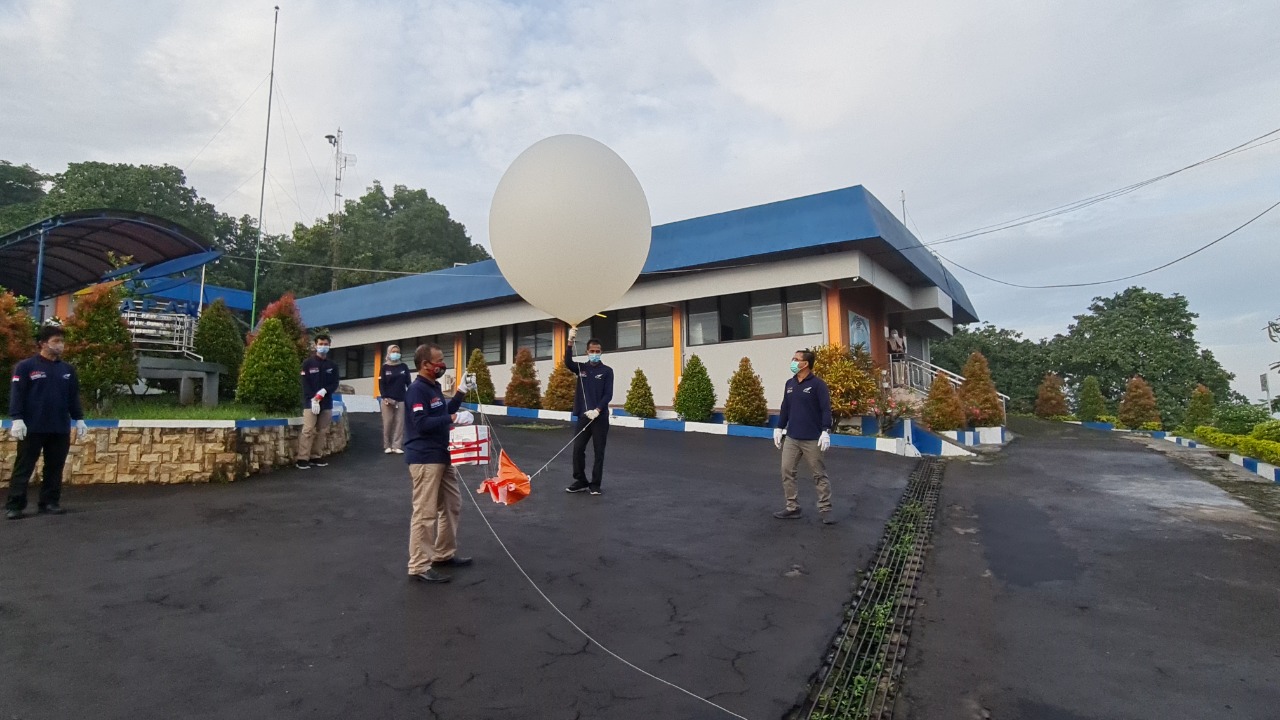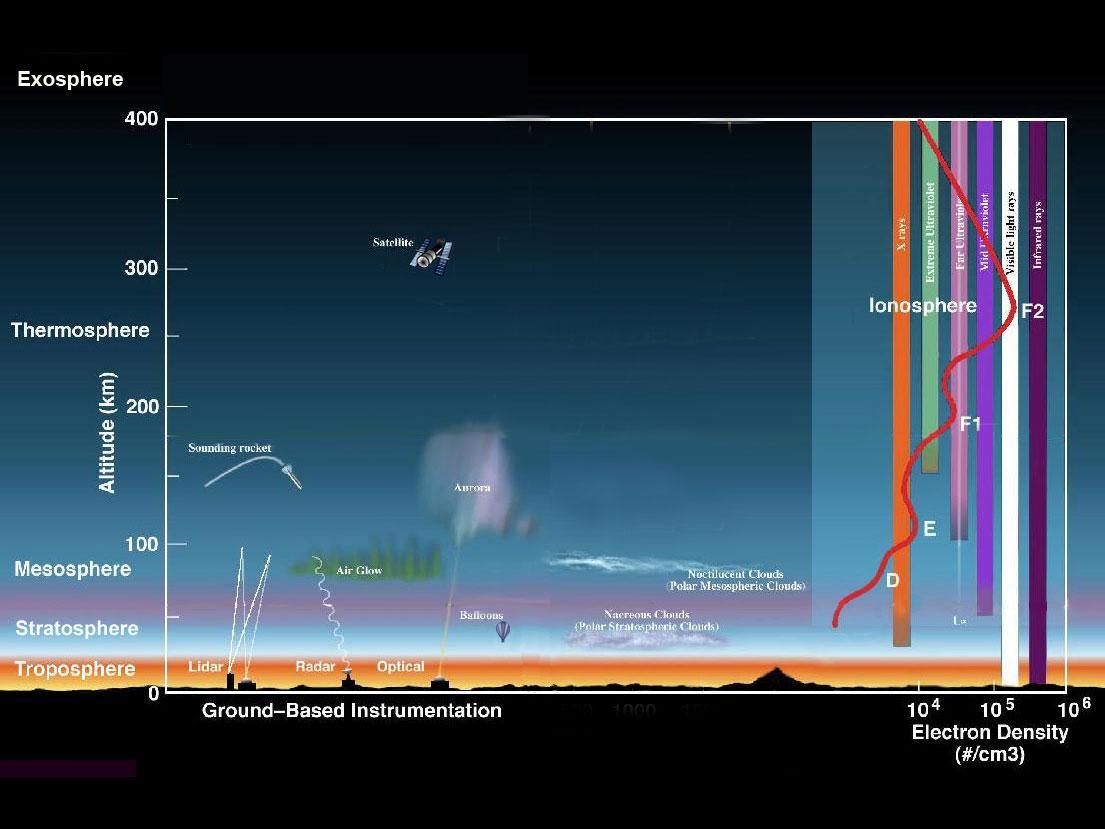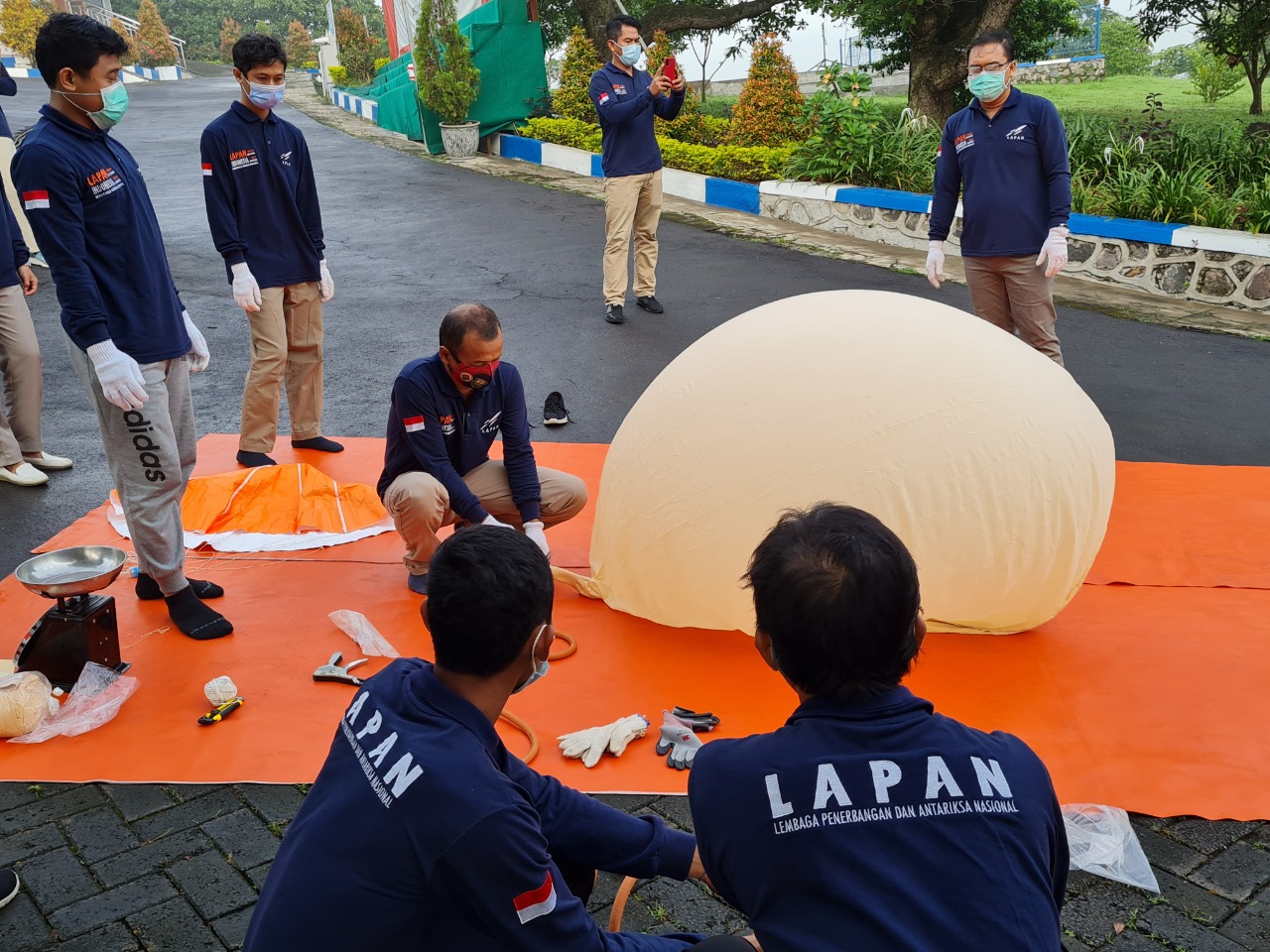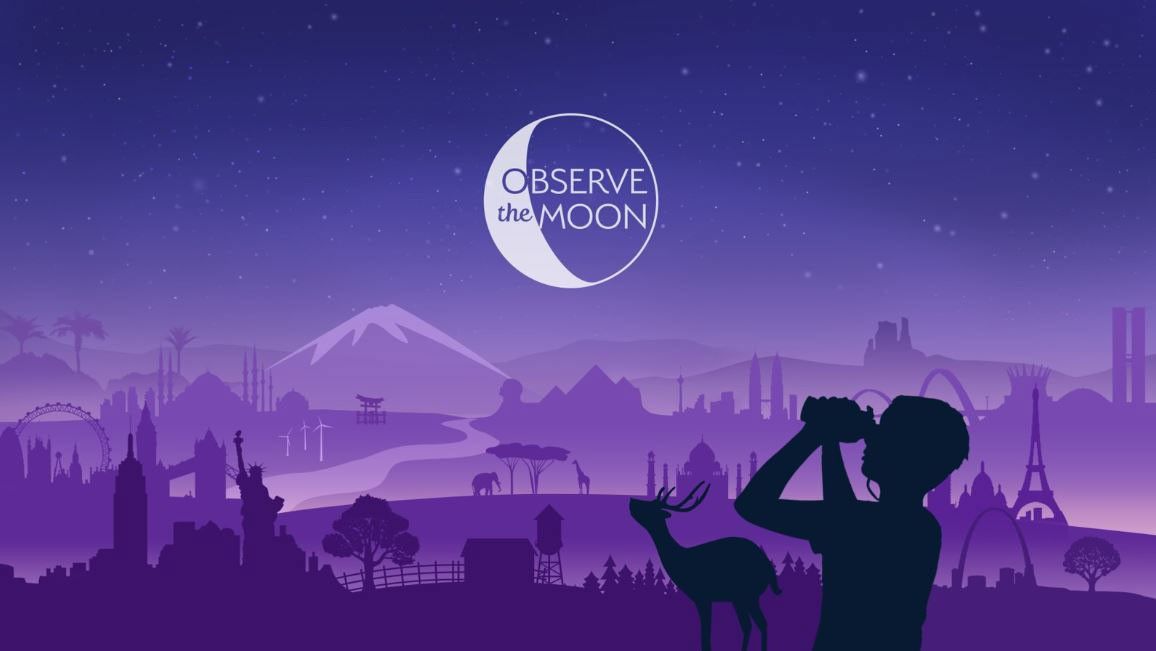Up, up, and … back down! On Jan. 27, scientists on an island in Indonesia launched a weather balloon carrying an ozonesonde – an instrument that measures ozone throughout the layers of Earth’s atmosphere. Ozonesondes collect valuable data that scientists use to understand Earth’s atmosphere, improve air quality predictions, and validate satellite measurements.
The Indonesian space agency, LAPAN, and NASA signed an agreement in November 2020 to resume ozonesonde launches from the Watukosek Observatory on the island of Java, Indonesia. NASA’s SHADOZ (Southern Hemisphere Additional OZonesondes) project supplies the ozonesondes and launches them in collaboration with LAPAN scientists on Java. This was the first ozonesonde launch at the site since 2013, and the scientists were eager to see how atmospheric ozone above that area may have changed since then.
About 90% of atmospheric ozone is in the stratosphere, the layer of the atmosphere which extends from about 10 to 31 miles high near the tropics. The remaining 10% is in the layer nearest Earth’s surface, the troposphere. Stratospheric ozone protects Earth from the Sun’s ultraviolet radiation. However, ozone in the troposphere is an air pollutant.
NASA already has satellites that measure ozone in Earth’s atmosphere from space, including the Ozone Monitoring Instrument (OMI) aboard NASA’s Aura satellite, which launched in 2004. But the technique that satellites use to measure ozone isn’t able to see changes in atmospheric ozone closest to Earth’s surface.
“The satellites have to look through this huge wall of stratospheric ozone to see the ozone near the surface,” said Ryan Stauffer, a NASA and University of Maryland research associate with SHADOZ. The SHADOZ ozonesonde program is managed at NASA’s Goddard Space Flight Center in Greenbelt, Maryland.
That’s where ozonesondes come in. As the balloon rises, the ozonesonde measures ozone approximately every 330 feet, giving scientists a vertical snapshot of how ozone is distributed in the atmosphere. The instruments attached to each balloon collect meteorological information, such as temperature, pressure, and wind speed, as well as ozone levels.
Through the SHADOZ project, NASA works with international collaborators to launch ozonesondes from 14 sites in the equatorial and low-latitude Southern hemisphere regions and makes that data available to the public. The Watukosek station in Indonesia was one of the nine original stations to join when the project began in 1998 but ceased launches in 2013.
The air above this station is particularly sensitive to fires from El Niño events and volcanic eruptions that lead to the destruction of stratospheric ozone. Volcanic eruptions spew sulfur dioxide, which is transformed into ozone-destroying aerosols in the atmosphere. The site is also near Surabaya, the capital of eastern Java and home to nearly 10 million people.
“Each station has some unique characteristics that make its natural variations in ozone and its unusual events different,” said Anne Thompson, an atmospheric chemist and senior scientist for NASA’s SHADOZ project.
For example, at the Watukosek station the team expects to see impacts of urbanization in the region, such as an increase in tropospheric ozone – also known as smog – near the station.
“It will be really interesting – after eight years – to see how things might have changed,” said Stauffer. LAPAN has ozone data from the Watukosek station dating back to the early 1990s. “Comparing our earliest data to the new record will show natural variations and human impacts after nearly 30 years,” noted Ninong Komala, one of LAPAN’s collaborators on Java.
































